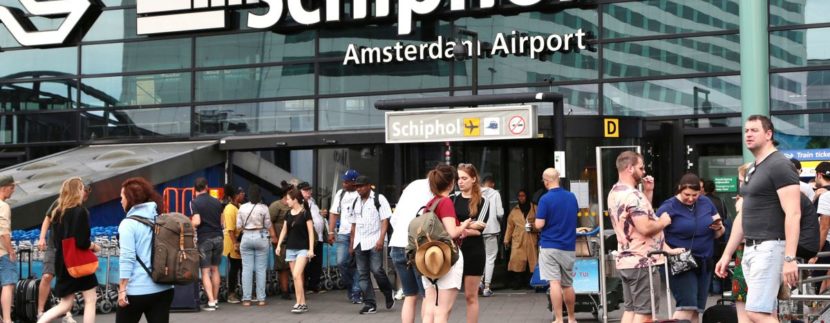Americans Should Expect Less Travel Disruption Vacationing In Europe This Summer

[ad_1]
If you jetted off to Europe last summer immediately after the continent fully reopened for tourism amid the post-pandemic travel frenzy, you might have realized, much to your dismay, that airports were not prepared for such an unprecedented surge in travel demand.

Back then, last-minute cancelations, long delays, winding queues, and severe staff shortages became the norm. After nearly three years of being barred from visiting, almost every American sought entry into Europe, and regardless of any mitigation measures in place, it was downright chaos.
Seeing that the appetite for travel is currently the highest it’s ever been, many predicted summer 2023 would be a mere extension of last year’s woes, but it could be the exact opposite. According to experts, travelers should, in fact, expect less travel disruption vacationing in Europe in the future:
Europe Is Better Prepared To Deal With Pent-Up Demand

According to ACI Europe, an airports organization, the European zone should be able to cope with demand this summer, and the capacity caps that affected operations across major hubs last year, including Frankfurt, Schiphol, and Heathrow, will be the exception rather than the rule.
At the peak of the crisis, these airports were forced to cut down the number of flights allowed per hour in order to adapt to the far more limited staffing levels and the sudden spike in passenger numbers. The move led to a wave of cancellations and other severe disruptions between the months of June and August.
Top 5 Travel Insurance Plans For 2023 Starting At $10 Per Week

Other airports like Dublin International faced extremely long wait times, with passengers who arrived many hours ahead of their flight being held up at security and prevented from boarding as a result of long delays. Things would only improve in the fall when the peak travel season came to an end.
Luckily, Olivier Jankovec, Director General of ACI Europe, has now reassured potential visitors that airports are more prepared to manage the busy air traffic come summer, as ‘they have reached out to all their operational partners’ to identify both risks and ‘stress points’.

Staffing Levels Are Sufficient
One particular concern is staffing levels, which remained way below the required minimum for such a sharp spike in travel bookings. According to Jankovec, not only airports but also airlines, ground handlers, border control forces, and air traffic control will ramp up their mitigation efforts.
In countries like the U.K., which at the beginning of 2022 was already struggling with a severe shortage of border officers, long customs delays had become all but inevitable. While we are not able to make country-based predictions, Americans traveling to Britain in 2023 may not be as badly affected as their peers who visited in 2022 following mass hiring campaigns.

In Jankovec’s own words, ‘by and large, the aviation system capacity on the ground should cope with demand, and capacity limitations will remain the exception‘. British Airways (BA) Chief Executive Sean Doyle added himself he is ‘confident’ there won’t be a repetition of last summer’s woeful stories.
Doyle notes they have ‘come a long way very quickly’, and that resourcing and operability are ‘in a much better shape than last year’. In actual figures, BA has hired more than 7,500 new staff since launching a major recruitment campaign last year.
Europe Is Nearing A Full Recovery

Other data shared by ACI Europe shows how close Europe is to returning to its pre-pandemic form. In January 2023, passenger traffic was only 11 percent lower than January 2019, with roughly 42 percent of European airports having already recovered their pre-crisis traffic.
The excellent indicators can be attributed to the continent’s resumption of normality and lifting of all border measures, a move which has encouraged American tourists, and all other visiting nationalities, to journey across the pond more. With the exception of Ukraine, Belarus, and Russia – for obvious reasons – all European nations are now open for tourism restriction-free.

Some of Europe’s fastest-recovering tourist destinations this year, in terms of air traffic, include Portugal, Cyprus, Croatia, Malta, and Romania. On the other hand, Slovakia, Slovenia, Czech Republic, and Germany lag behind by at least 30 percent compared to the pre-COVID years.
Willie Walsh, IATA’s Director General, was quoted saying ‘with strong travel demand continuing through the traditionally slower winter season in the Northern hemisphere, the stage is set for an even busier spring and summer.’
Traveler Alert: Don’t Forget Travel Insurance For Your Next Trip!
↓ Join Our Community ↓
The Travel Off Path Community FB group has all the latest reopening news, conversations, and Q&A’s happening daily!

SUBSCRIBE TO OUR LATEST POSTS
Enter your email address to subscribe to Travel Off Path’s latest breaking travel news, straight to your inbox
This article originally appeared on TravelOffPath.com
[ad_2]
Source link






